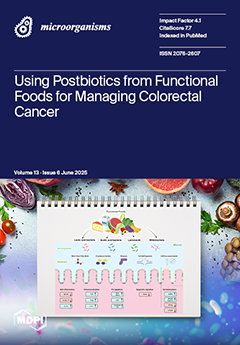Ceftiofur sodium (CFS) is a clinically significant cephalosporin widely used in the livestock and poultry industries. However, CFS that is not absorbed by animals is excreted in feces, entering the environment and contributing to the emergence of antibiotic-resistant bacteria (ARB) and antibiotic-resistant genes (ARGs). This situation poses substantial challenges to both environmental integrity and public health. Currently, research on the biodegradation of CFS is limited. In this study, we isolated a strain of
Escherichia coli, designated
E. coli CS-1, a Gram-negative, rod-shaped bacterium capable of utilizing CFS as its sole carbon source, from fecal samples collected from hog farms. We investigated the effects of initial CFS concentration, pH, temperature, and inoculum size on the degradation of CFS by
E. coli CS-1 through a series of single-factor experiments conducted under aerobic conditions. The results indicated that
E. coli CS-1 achieved the highest CFS degradation rate under the following optimal conditions: an initial CFS concentration of 50 mg/L, a pH of 7.0, a temperature of 37 °C, and an inoculum size of 6% (volume fraction). Under these conditions,
E. coli CS-1 was able to completely degrade CFS within 60 h. Additionally,
E. coli CS-1 exhibited significant capabilities for CFS degradation. In this study, six major degradation products of (CFS) were identified by UPLC–MS/MS: desfuroyl ceftiofur, 5-hydroxymethyl-2-furaldehyde, 7-aminodesacetoxycephalosporanic acid, 5-hydroxy-2-furoic acid, 2-furoic acid, and CEF-aldehyde. Based on these findings, two degradation pathways are proposed. Pathway I: CFS is hydrolyzed to break the sulfur–carbon (S–C) bond, generating two products. These products undergo subsequent hydrolysis and redox reactions for gradual transformation. Pathway II: The β-lactam bond of CFS is enzymatically cleaved, forming CEF-aldehyde as the primary degradation product, which is consistent with the biodegradation mechanism of most β-lactam antibiotics via β-lactam ring cleavage. Transcriptome sequencing revealed that 758 genes essential for degradation were upregulated in response to the hydrolysis and redox processes associated with CFS. Furthermore, the differentially expressed genes (DEGs) of
E. coli CS-1 were functionally annotated using a combination of genomics and bioinformatics approaches. This study highlights the potential of
E. coli CS-1 to degrade CFS in the environment and proposes hypotheses regarding the possible biodegradation mechanisms of CFS for future research.
Full article






